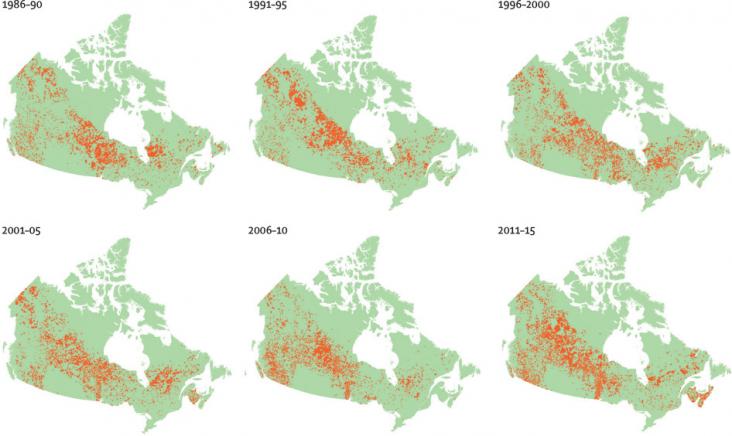An Article in support of SDGs 2 and 15, showing that farm-level diversification might contribute to improved nutrition among children and other target groups in some but not all situations, but livestock production seems to be conducive for improving child and adolescent nutrition on average.
A Review on the association between agricultural food production and hunting practices and zoonotic disease outbreaks, in the context of SDGs 3, 12, and 15, highlighting the need to redesign the global food system to reduce the threat of future outbreaks.

This is an article on the impact of residential exposure to wildfires and the incidence of various cancers, in the context of SDGs 3, 13, and 15, focusing on the need to develop exposure metrics to better estimate the chronic population health burden attributable to environmental pollutants emitted during wildfires.

On April 22 every year, we celebrate the anniversary of the birth of the modern environmental movement with Earth Day.
The authors investigate whether applying multiple welfare indicators’ and triangulating them can lead to converged and corroborating evidence of welfare, or whether the indicators' contradict one another.
Background: Individuals with COPD have increased sensitivity to traffic-related air pollution (TRAP) such as diesel exhaust (DE), but little is known about the acute effects of TRAP on exercise res
This book chapter advances SDGs 12 and 15 by explaining how the wine sector must implement more sustainable practices to mitigate climate change impacts and to decrease its environmental impact while ensuring its important economic and social function. This chapter presents and discusses the most relevant risks and concerns of modern wine industry and major sustainability issues related to wine production and related supply chain.
This article supports SDG's 13 and 15 by discussing the main findings from the Special Issue on the impact of global changes on soil biodiversity: from fauna, to fungi, soil organisms and microorganisms.

This article demonstrates that, by actively engaging in the interdependent phases of recognizing hybridity, enabling conditions for reflexivity and partnership building, 'inclusivity' tensions can not only be acknowledged but softened and, in some cases, reframed when managing for biodiversity, equity, and justice goals.
A research paper by Hannam 2022 underlines the complexities of soil and land degradation and the pursuit of Land Degradation Neutrality (LDN), emphasizing its integration into global policy frameworks like the United Nations' Sustainable Development Goal 15 and the Convention to Combat Desertification. It argues for essential reforms in soil governance, advocating for inclusive participation, legislative provisions, and practical guidance to ensure progress towards LDN targets while maintaining soil and ecosystem functions.
